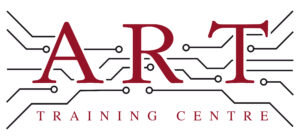Definition
Wave Soldering is a soldering process used in electronics manufacturing to join components to printed circuit boards (PCBs). It involves passing the PCB over a wave of molten solder, which creates reliable electrical connections. This method is particularly effective for through-hole components and is a crucial part of mass production in the electronics industry.
How It’s Used in the Industry
In electronics assembly, Wave Soldering is applied in several steps. First, the PCB is prepared by placing through-hole components into their respective holes. Next, the board is preheated to remove moisture and ensure proper solder adhesion. The PCB is then passed over a wave of molten solder, which fills the holes and forms solder joints. Post-soldering, the board undergoes inspection to check for defects. This process is vital for both technicians in training and experienced professionals, as it ensures the quality and reliability of electronic devices, making it a fundamental skill in electronics manufacturing.
History & Origins
Wave Soldering became common in the 1950s as the demand for mass-produced electronic devices increased. Initially developed in the United States, it quickly gained popularity due to its efficiency and ability to handle multiple connections simultaneously. The establishment of standards, such as those from IPC (Institute for Printed Circuits), further solidified its importance in the industry. Advancements in technology, including the development of better solder alloys and equipment, have allowed wave soldering to evolve and remain relevant in modern electronics manufacturing.
Variations
There are several variations of Wave Soldering, including selective wave soldering and dip soldering. Selective wave soldering targets specific areas of the PCB, allowing for the integration of surface mount technology alongside through-hole components. This method differs from traditional wave soldering, which typically solders all connections at once. Each variation has its advantages and is chosen based on the specific requirements of the assembly process, such as component density and board design.
Modern Applications
Today, Wave Soldering is widely used in electronics production, particularly for through-hole components on PCBs. It remains relevant in the assembly of both consumer electronics and industrial devices. With the rise of surface mount technology, wave soldering is often employed in conjunction with other methods to ensure high-quality solder joints. Compliance with IPC standards is crucial, as it guarantees the reliability and durability of electronic assemblies, making wave soldering an essential technique in modern manufacturing.
Practical Tips & Training
When working with Wave Soldering, it is important to follow safety protocols, including wearing protective gear and ensuring proper ventilation. Inspecting solder joints visually or with automated systems is crucial to identify defects early. Familiarity with tools such as soldering machines and inspection equipment is beneficial. Structured training and certification in wave soldering techniques are essential for developing the skills needed for quality electronics manufacturing, ensuring technicians can meet industry standards effectively.


